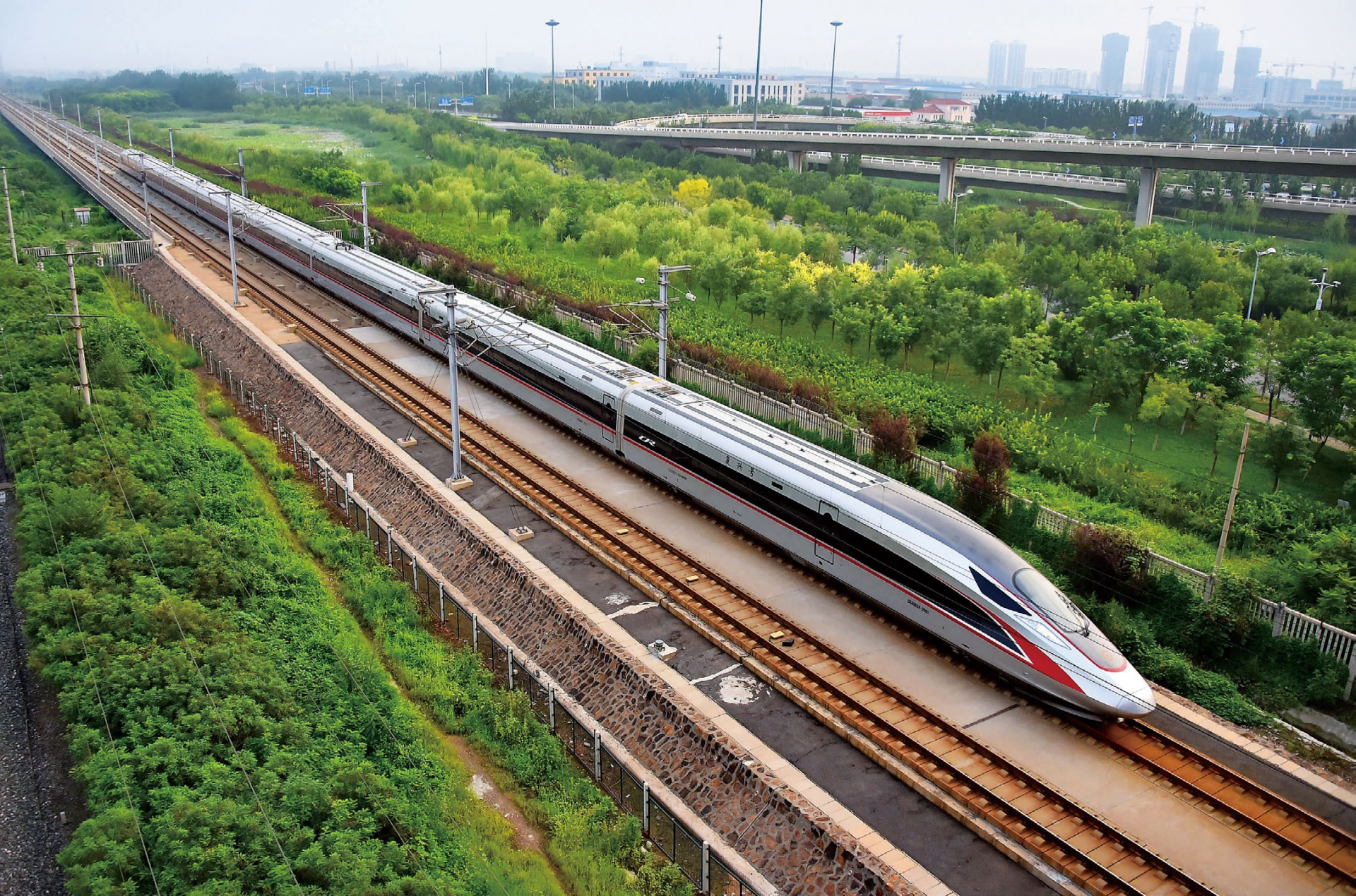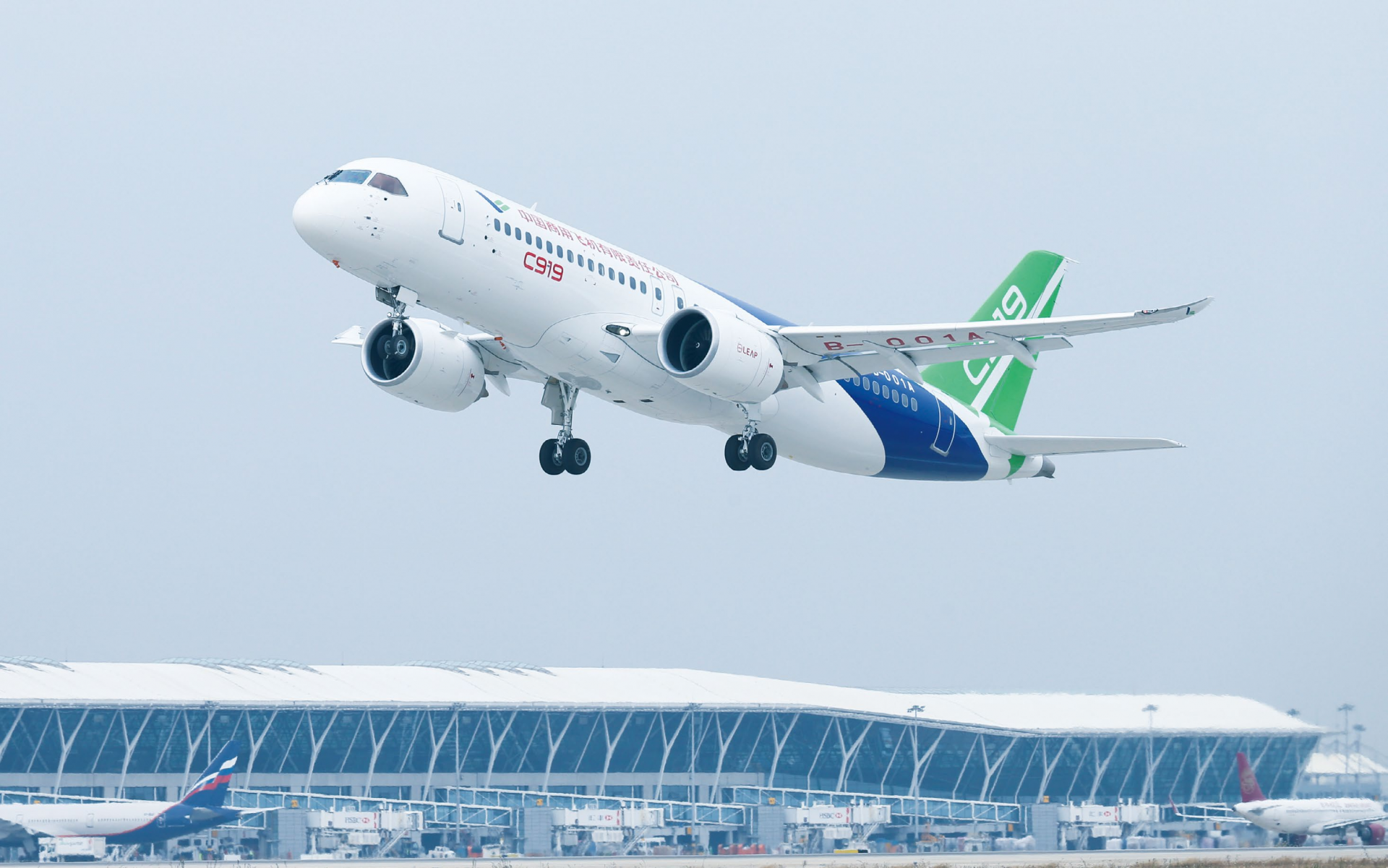BEIJING, Oct. 15 (Xinhua) -- China's transport is further accelerating its development in the new era from 2012.
China is among global top ranks in terms of the scale of comprehensive transport infrastructure. The layout of its integrated transport hubs has been continuously improved. China ranks first in the world in terms of the total length of high-speed railways, expressways, navigable inland waterways and operating urban rail transit lines. It also ranks first in terms of the number of coastal port berths of 10,000-tonne-class vessels or above, as well as its maritime shipping connectivity. China is also either the first or at the forefront in the world in terms of passenger and freight transport turnover via railways, highways, waterways and civil aviation, as well as port cargo throughput and business volume of postal and courier services. China is now one of the countries with the busiest transport in the world.

A Fuxing bullet train speeds across the vast land.
China's vast networks of highways and railways have been continually expanded, and high-speed trains, giant vessels and flights have connected more places than ever before, including those that were previously inaccessible. The C919 large passenger aircraft, the country's first trunk line civil plane with completely independent intellectual property rights and built in accordance with the latest international airworthiness standards, made its maiden flight in 2017. The commissioning of China's Fuxing EMU trains marked the full independence of the country's high-speed railway technology. China also leads the world in the field of technology set for building cross-sea bridges and tunnels, deep-water channels, automated container terminals and other areas. A number of mega-projects have been completed, including the Hong Kong-Zhuhai-Macao Bridge, the Beijing-Zhangjiakou High-speed Railway, the automated container terminal at Shanghai's Yangshan Port and the Beijing Daxing International Airport.

On Nov. 10, 2017, a C919 aircraft, China's homemade large passenger plane, took off from the Shanghai Pudong International Airport. It is China's first trunk line civil aircraft designed in accordance with the latest international airworthiness standards and with completely independent intellectual property rights.
China aims to provide even better passenger and cargo transport services, and is transforming its large transport sector to a strong one. The Outline for Building China's Strength in Transport and the Guidelines on Developing an Integrated National Transport Network have been released. They call for building an integrated and multidimensional transport network comprising "six axes, seven corridors and eight thoroughfares" across the country. These guidelines are the rallying call to further strengthen China's transport sector.
The world is becoming increasingly interdependent, and all nations share a common future. A connectivity framework consisting of "six corridors, six routes, multiple countries and multiple ports" has taken shape. China-Europe freight trains reach 23 European countries. China has established international road transport cooperation with 19 countries. Its international maritime transport routes connect more than 100 countries, and its civil air routes reach 64 countries and regions. China also actively participates in global transport governance, and is a party to close to 120 multilateral transport agreements.
China pursues high-standard opening up and encourages Chinese transport to "go global and bring in". With a focus on facilitating cooperation under the Belt and Road Initiative, China will endeavor to promote integrated land, sea, air and cyber connectivity and the harmonization of related policies, rules and standards, so as to boost connectivity with other countries and facilitate international transport. China will constantly contribute its vision and solutions to global transport governance to help improve transport connectivity all around the world and deliver benefits to all.
Guided by the vision of building a community with a shared future for mankind, China will continue to implement the UN 2030 Agenda for Sustainable Development and strengthen international exchanges and cooperation on transport. China will work with all other countries to strengthen global connectivity and forge a stronger people-to-people bond, thus making greater contributions to building a better and more prosperous world.
(Contributed by Ye Qiong, Shi Chunjiao, edited by Gu Shanshan)




 A single purchase
A single purchase









